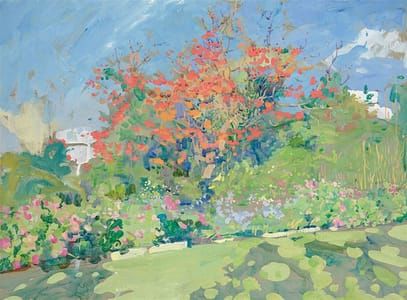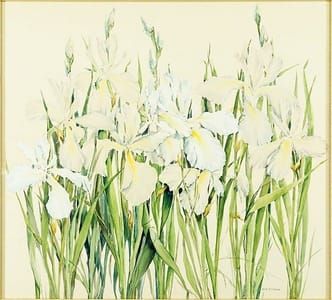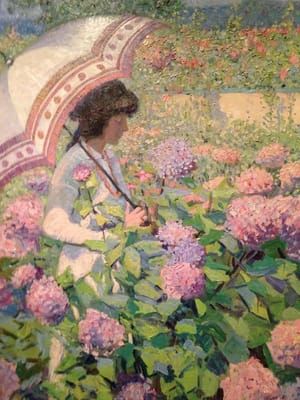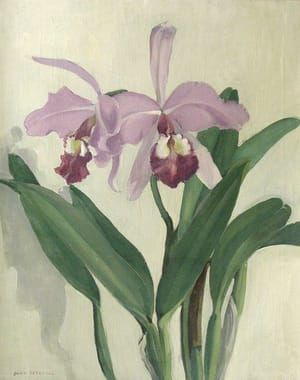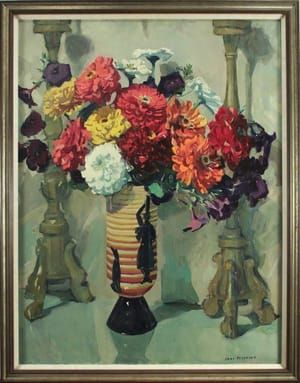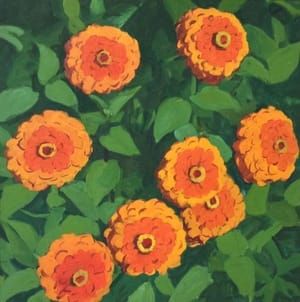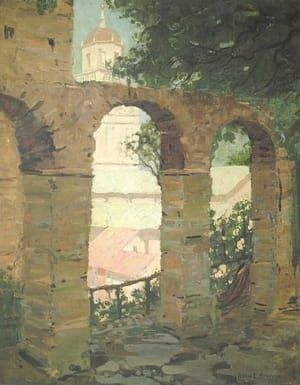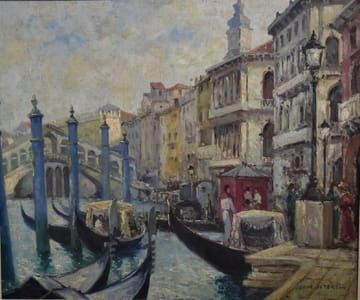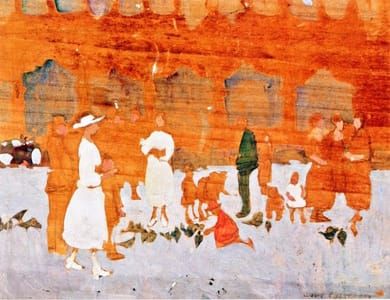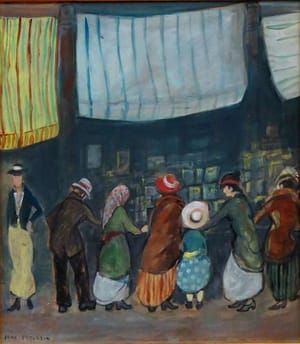
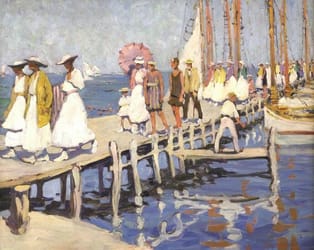
Untitled
Jane Peterson
Never one to succumb to the unlucky fate of drifting from one style to the next in search of her own aesthetic syntax, Jane Peterson had an unwavering fidelity to her sense of self as an artist. Although the circles she traveled in included such powerful creative forces as Picasso, Gertrude Stein and Matisse, she instinctively knew when and from whom to draw inspiration and when to remain firmly anchored in her own independent vision. Her formal training began in 1896 at Pratt Institute in New York under the instruction of Arthur Wesley Dow. A few years after graduating from Pratt in 1901, Peterson continued her artistic training in Europe. She headed overseas and traveled extensively, eagerly seeking out leading European artists under whom she would study for brief periods of time. She spent valuable weeks with English artist Frank Brangwyn, "who impressed [her] with his attention to bold shapes and his elimination of unessential detail. It is from Brangwyn that she developed her own strong sense of design, silhouette and boldness of mass" (J. Jonathan Joseph, Jane Peterson: An American Artist, 1981, p. 25). She shrewdly extracted insight from each of her experiences abroad, further defining and synthesizing her art. After returning to the United States in 1908 she continued to move about, frequenting the various artist colonies along the New England coast, including the one at Edgartown on Martha's Vineyard. On the Pier, Edgartown exhibits Peterson's definitive style. J. Jonathan Joseph writes, "Her bright flat color passages contain well-thought-out linear draftsmanship which she had learned from her more conservative teachers, and her subject matter ... took on an American clarity and independence of it's own. Peterson's Gloucester and New York views after 1909 show an ease and sureness where simple design and brushwork develop deep perspective through grand, sweeping movements" (Joseph, p. 17).
(http://www.invaluable.com/auction-lot/jane-peterson-1876-1965-49-c-7962hk1oj2)
Uploaded on May 25, 2017 by Suzan Hamer
Jane Peterson
artistArthur
Wait what?
